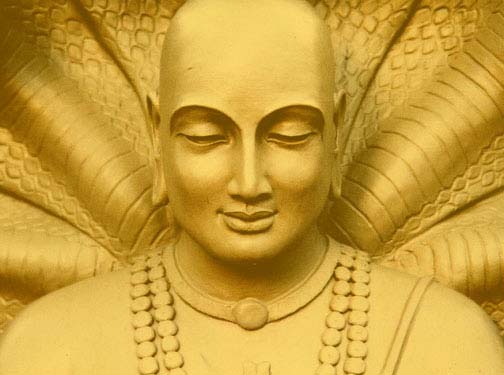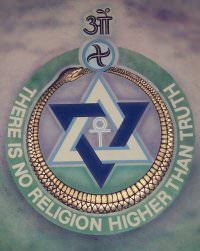A very wise man called Manly Hall once said: “Before you put your feet upon the path of wisdom, you must place your own being in a state of order.”
This is exactly what I have been doing for quite a long, long time, and haven’t really finished, because to place your whole being in a state of order requires a tremendous amount of discipline, will power, continuos purification, de-conditioning, etc, in order to harmonize mind body spirit.
So when people ask me what is exactly my daily practice, it is pretty hard to explain in few words what I’m doing every day (and then try to take that into every activity I’m doing for the rest of the day!). Here I am trying to share a little bit about my favorite practice, which is classical yoga Raja Yoga, Tibetan Yoga – Vajrayana Yoga (Yoga Of Joy – read more about it here ), and Self Transformation (more about it here).
Raja Yoga, which is also named the Yoga of the Kingly Science and Kingly Secret, combined with Tibetan Vajrayana Yoga, Yoga Of Joy have a Super Powerful Spiritual Science and Technology behind them. Raja Yoga for example is super old: 2000 years written, and few more thousands years in oral transmission, that’s why the name “Kingly Science and Kingly Secret”! It is the Yoga-Sutra of Patanjali that is one of the most enlightening spiritual documents of all times, and with its 196 pearls of wisdom, or aphorisms, remains unrivaled for its penetrating insight.

The ultimate goal of yoga, is the union with the with the Supreme Spirit, which is called “samadhi” or in Zen Buddhism “satori” or in Christian mysticism “God-consciousness.” Regardless of the term used, it means the liberation of the individual spirit from the prison house of earthly limited consciousness, as Krishnamurti would say, and in order to accomplish that Self-Realization, that union, we need to eliminate all the obstacles.
The practice of this “Real Yoga”, or the “Ultimate Yoga” as HP Blavatsky called Raja Yoga, is no easy task, for it involves a harmonization of one’s whole being – physical, mental, emotional and spiritual. Raja Yoga, incorporates the main characteristics of all the other various systems of yoga, three of them being especially valuable for the Western student: Jana Yoga, Karma Yoga, and Bakhti Yoga. So to place one’s life in a state of order, we need to purify our emotions and expand the intellect. This royal road includes very valuable disciplines. Practicing all these disciplines rigorously, one’s self-identification with the fluctuating personality starts to disengage and disentangle and one starts to realize oneself as an immortal divine being identical with the Divine Life.
Raja Yoga emphasizes the benefits of meditation for spiritual self-realization and the purposeful evolution of consciousness, as it also mentions the importance of right physical discipline, right breathing, right moral behavior with respect to others and with respect to oneself, and the practice of compassion.

Jñana yoga puts emphasis on knowledge—not just ordinary factual knowledge, but insight into the eternal truths that lie beneath the surface facts of life, just like what we call Theosophy stands for. The word jñana yoga is related to the English know and the Greek gnosis. It refers to knowledge resulting from a direct experience of reality. One who follows it continually strives for a fuller and deeper understanding of the meaning of life. Like a good scientist, the follower of jñana yoga is not afraid to discard outworn theories or views of reality, but ever seeks an undistorted vision of the whole.
Karma yoga is the path of action. It is the path of those who are moved by compassion and sympathy for suffering of others, want to be at help and do something about it, and they do it.
Bhakti yoga is the way of devotion and the emphasis is on love, not jus human love as an emotion, but as a dedication and self-surrender to the Supreme Reality. The form may be an incarnation of the Godhead, such as Christ or Krishna. Or it may be a great sage, a God-realized, or it may be a mental image of the divine, such as the Divine Mother. This is the yoga on which Christianity and some other great religions are based. It is a path that helps many people lose themselves in adoration of the Divine. But we can all follow it by honoring the sources of wisdom and compassion, wherever they appear.
Mantra yoga, or Japa is another kind of yoga, which involves the repetition or chanting of sacred phrases or words with concentrated attention. This system therefore involves a knowledge of the esoteric potency of sound, for its aim is to tune the personal nature to a subtler nature than the ordinary waking consciousness, so that ultimately the individual may hear the inner Divine Voice. Gregorian chant, the saying of the rosary, the recitation of a litany, or in Eastern Christianity, the “Jesus prayer,” which is the repetition of the name of Jesus, are all techniques for focusing the mind and concentrating on spiritual awareness. These systems are all interconnected and are by no means exclusive of each other.
The eight limbs of Raja Yoga are:
- Yama – Ahimsa or harmlessness -non violence, non manipulation, non interference (moral observance, self restraint)
- Niyama (inner integrity or right observance) “truth,” or “not lying, “not stealing, sexual restraint, etc.
- Asana –posture or right alignment
- Pranayama (breath control or regulating of the breath)
- Pratyahara (sensory withdrawal, or turning of the senses inward)
- Dharana (concentration, or steady attention)
- Dhyana –meditation or wide open awareness
- Samadhi (enlightenment or absorption
These ethical and spiritual observances help us develop the more profound qualities of our humanity.
 1.Yama, originally meant “bridle” or “rein.” Patanjali used it to describe a restraint that we willingly and joyfully place on ourselves to focus our efforts, the way a rein allows a rider to guide his horse in the direction he would like to go. In this sense, self-restraint can be a positive force in our lives, the necessary self-discipline, and to develop kindness, truthfulness, abundance, continence, and self-reliance.
1.Yama, originally meant “bridle” or “rein.” Patanjali used it to describe a restraint that we willingly and joyfully place on ourselves to focus our efforts, the way a rein allows a rider to guide his horse in the direction he would like to go. In this sense, self-restraint can be a positive force in our lives, the necessary self-discipline, and to develop kindness, truthfulness, abundance, continence, and self-reliance.
2. Nyamas – The five niyamas are
- Saucha: cleanliness.
- Samtosa: contentment.
- Tapas: heat; spiritual austerities.
- Svadhyaya: study of the sacred scriptures and of one’s self.
- Isvara pranidhana: surrender to Spirit, or to the Divine, or Source.
3. Asana : In my view, the body is a temple of spirit, or a sacred vehicle that we need to take care of, which is an important stage of our spiritual growth. According to Raja Yoga philosophy, the postures are merely preludes to deeper states of meditation that lead us toward liberation, where our minds grow perfectly still and our lives start to make sense. Through the practice of asanas, we stay strong, flexible and healthy, develop the habit of discipline and the ability to concentrate, all of which are necessary for meditation.
4. Pranayama: Or “Life force extension, “yogis believe that it not only rejuvenates the body but actually extends life itself. We can practice pranayama as an isolated technique, or in combination with the asanas. The breath has a mysterious power to soothe, awaken and revitalize a tired body. Prana, the vital force circulating through us, can be cultivated and channeled through a series of breathing exercises. In the process, the mind is calmed, rejuvenated, and uplifted. Pranayama serves as an important link between the active practices of asana, and the next stages of pratyahara (going within), Dharana (concentration) and meditation.
5. Pratyahara: Withdrawal of the senses. We make the conscious effort to draw our awareness away from the external world and outside stimuli, but at the same time not to tune everything out, but instead to find the source of silence, stillness and calm that resides within us, even in the midst of chaos. Keenly aware of, yet cultivating a detachment from, our senses, we direct our attention internally. This withdrawal allows us to discriminate and notice our detrimental habits that are perhaps the culprit of our unhealthy body and our very slow inner growth. There’s a reason for this sequence. To cultivate pratyahara, we need to apply what we’ve learned from the physical poses (asanas) and breathwork (pranayama); in turn, pratyahara prepares you for the deep inward concentration required for meditation. Our breath slows down, muscles relax, followed by a feeling of letting go, and at the same time a connection to the universe. Usually, we unconsciously choose how much we’re going to feel by how much we breathe. When we breathe more deeply, we feel more, and that means we are more vulnerable which our ego is not that found of.
6. Dharana: or concentration. Having relieved ourselves of outside distractions, we can now deal with the distractions of the mind itself. No easy task! In the practice of concentration, which precedes meditation, we learn how to slow down the thinking process by concentrating on a single mental object: a specific energetic center in the body, an image of a deity, or the silent repetition of a sound.

7. Dhyana – Meditation or contemplation, the seventh stage is the uninterrupted flow of concentration. Dhyana is ultimately a state of being keenly aware without focus.
8. Samadhi: Patanjali describes this eighth and final stage of, samadhi as a state of ecstasy. At this stage, the meditator merges with his or her point of focus and transcends the Self altogether. The meditator comes to realize a profound connection to the Divine, an interconnectedness with all living things. With this realization comes the “peace that passeth all understanding” also comes.
As we are practicing simple practices of asana, pranayama, concentration and meditation we are actually noticing that we are beginning to care more for our family members, community, the planet, and yes, all sentient beings! We come closer to our center, which is THE CENTER, feeling more intimate with everything around us. We are bringing into harmony and a state of oneness, the forces of our body and mind, which are often tugging at each other in different directions. The united body and mind in turn need to be connected with something still deeper, which we may call Spirit, or the immortal Self, One Life and, finally, there is the ultimate union of our individual Spirit with the Universal or Supreme Spirit, which is both within and beyond everything, being inside each one of us and all around us.
“The soul of man is immortal, and its future is the future of a thing whose growth and splendor has no limit! The principle which gives life, dwells in us and without us, and is eternally beneficial. Is not heard, or seen felt, but is perceived by the man who desires perception.” THE THREE TRUTHS The Idyll Of The White Lotus by Mabel Collins
